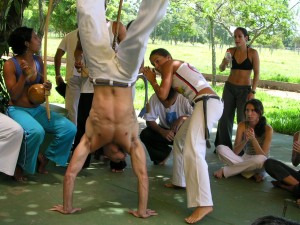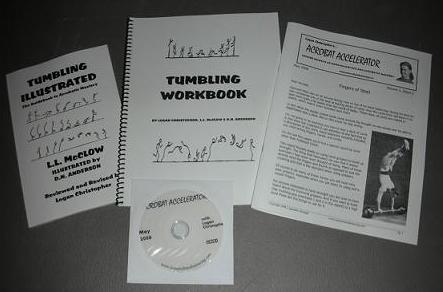Thanks for all the comments on the previous post on the different ways people come to hand balancing.
Different ideas and issues were raised so I’d like to delve further into the subject for today.
Gymnastics – First off George corrected me about hand balancing in gymnastics. I’ll reprint what he said below.
Their are six sports/disciplines within Gymnastic in America. Three of them use hand balancing. One; Acrobatic Gymnastics, uses it VERY VERY heavily. The other two are Men’s and Woman’s Artistic Gymnastics. You still get one arms from Girls on Beam at the Elite and Jr. Elite level and hand balancing as you see it is extremely good practice for developing handstands on Rings for Men’s artistic. Particularly if the men move from static support apparatus to one with some movement to simulate Rings.
In other parts of the world hand balancing is becoming part of another gymnastic sport-discipline once called Sport Aerobics, now often termed as Aerobic Gymnastics. Though their hand balance skills are simple Crocks… I predict that this will grow much much larger. This sport is huge in many european countries.
I stand corrected. It seems my gymnastic experience only goes as far as what I see in the major events in the Olympics. But in the future I’ll be diving deeper into these other disciplines.

Capoeira in Action
Several people come to my site in efforts to improve their handstands for more strength and endurance in order to increase their Capoeira skills.
Parkour – Freerunners or Traceurs (the term for those that practice Parkour) obviously cover a wide variety of acrobatic and movement skills. I’ve heard in described as Parkour being moving as efficiently as possible through a path or course. While Freerunning adds the elements of skill and tricks to the mix. In this case handstands would make more sense for freerunning as walking across a field on your hands is quite inefficient compared to running across.
Of course, it’s all about mastering the human body and movement. Hand balancing is the same. So it’s no wonder that those who are proficient and experts in Parkour are usually proficient or experts in hand balancing. The two go together hand in hand and that’s why I offer the Parkour Tutorial DVD on this site.
Crossfit – This would certainly fit into the bodyweight trainees category. While I don’t agree with everything they do, Crossfit should be applauded for bringing all the best movements, with weights and without, to people. This includes handstand and handstand pushups.
Just a few more ways people may get started and interested in handstands and hand balancing. Any way you come at it is good. And all ways are equally valid. Not to mention if you find yourself in one group you can learn by going outside the boundaries and learn from the others.
Good Luck and Good Hand Balancing,
Logan Christopher









